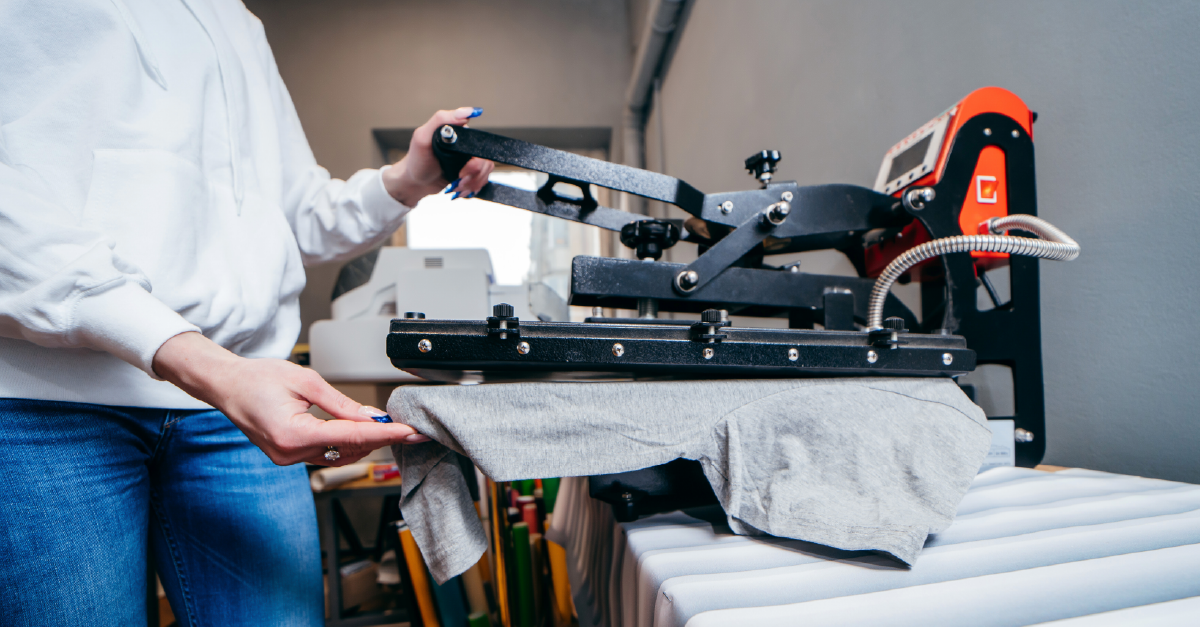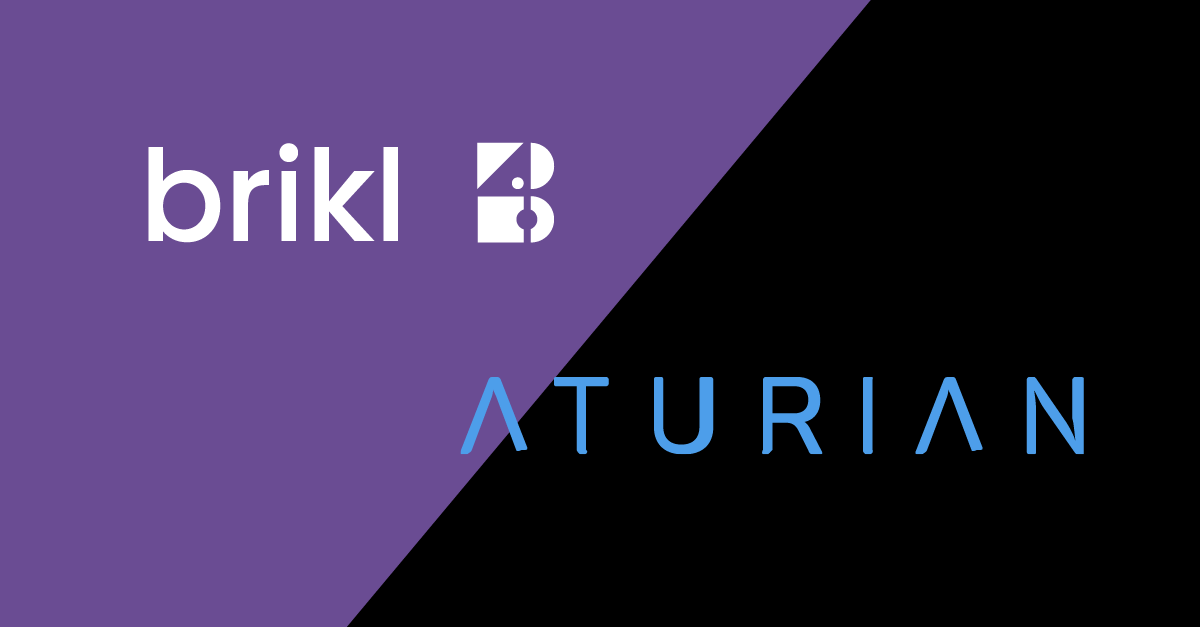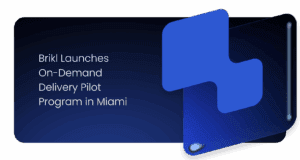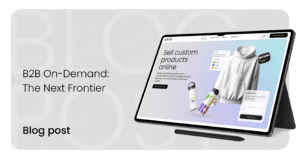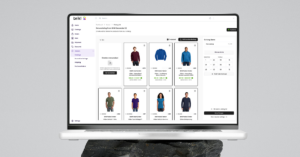There was no keener sense of disruption to this established expectation than during the pandemic.
Supply chains were heavily impacted at every level, from the ability to source and transport raw materials to the delivery networks that ground to a halt. As the world stood still, we were transported back to the days where online orders haltingly crawled towards us and, let’s be honest, it wasn’t much fun.
So how is the dawn of a new set of consumer behaviors and expectations shaping the e-Commerce landscape?
Ask, and you shall receive: the true cost.
With volatility seemingly here to stay, especially in the clothing and apparel market, many organizations across every sector are considering how best to create agile business models that can keep pace.
For smaller businesses, in particular, on-demand production (also known as ‘cloud manufacturing’) has a number of advantages, as traditional manufacturing relies on economies of scale through mass production and mass storage. As a consequence, this also means huge minimum order quantities (MOQs), long lead times that had the potential to cripple smaller businesses, and a disastrous environmental cost. Thanks to on-demand manufacturing and changing consumer behavior, this could all be a thing of the past.
But why us traditional manufacturing so bad for small business?
Because mass production creates a domino situation: sales have to be made, which means costs are being pushed down the supply chain, which in turn means that credit sales have to be made. As a consequence of this, companies may be put into debt they can’t overcome. On-demand manufacturing dispenses with credit sales as customers tend to pay upfront, eliminating the need for working capital.
As 3D printing, custom, and on-demand manufacturing increasingly look like the way to go, here are some distinct benefits of these methods over conventional mass production.
Customer-centricity
With businesses big and small seeing the genuine value of putting their customers’ needs first, on-demand manufacturing allows a more resilient connection between the buyer and vendor systems. This leaves sprawling traditional manufacturing models at a disadvantage as the large network of considerations pushes customer needs further away.
An increasing amount of data available through channel analytics, subscription data, the Internet of Things (IoT), social and review sites, weather channels, and local events, to name but a few, has made it easier to get valuable and actionable insights into your consumers. And the closer you are to them, the easier it is to sense demand, shape demand and innovate proactively.
What’s more, as a few small companies cannot dominate the market through mass production, on-demand production helps level the playing field through increased competition while giving product developers a path of least resistance when trying to think creatively about their designs.
Fashion the market
Rapidly evolving fashion, apparel, and retail markets are fixated on customer behavior. A traditional production cycle can take anywhere from six to nine months to bring a product to market, which means assumptions often need to be made when it comes to stock. But excess, or unsold stock at the end of a season, is bad for business, resulting in markdowns, which consequently damages brand reputation while creating wastage.
On-demand production not only lowers a production cycle down to less than a month, it helps preserve the perceived quality of the product while reducing its environmental impact. Speaking of which…
Waste not, want not
With millennials now the largest consumer segment globally, it’s important to know what makes them tick: convenient delivery and pricing. This highly educated demographic are tech-savvy and curious and lean towards sustainably-produced products. In McKinsey’s September podcast How Gen Z and millennials are shaping the future of US retail, Bo Finneman and Emma Spagnuolo talk about the difference between Gen Z and millennials:
“[Gen Z is] looking beyond tangible products and actually trying to understand what is it that makes the company tick. What’s its mission? What’s its purpose? And what is it actually trying to build for us as a society?” Bo Finneman.
There’s a feedback loop between the two generations when it comes to company values, transparent production, and sustainability that cannot be addressed by traditional manufacturers easily. Mass production is detrimental to the environment in every way, from the pressure it puts on the planet in its demand for raw materials to the debilitating levels of waste generated by the end. On-demand manufacturing only takes place when there is a genuine demand from customers, ensuring that natural resources are only to address a real need.
Although on-demand production has its downsides such as the ongoing expense of investing in cloud-based technology to monitor and manage demand and supply, the stability, scalability and savings this process can offer small and mid-sized businesses in particular can offset costs. But most importantly, unlike traditional manufacturing, on-demand production offers an earth-friendly, customer-friendly approach, matching a new generation of demands with next-generation technology.
Start your on-demand journey with Brikl
With Brikl, on-demand manufacturing is automated through our cloud-based, end-to-end commerce platform. Not only does this allow you to provide your customers all the benefits described above, it creates a culture of internal efficiency.
Repetitive tasks are costing businesses as many as 19 working days per year for just one employee. In your world, that could be time spent tackling customer orders across spreadsheets. Not to mention the back and forth involved in the design and sales process. These are just a few ways businesses leak value—time, money and effort—every day. And just a few ways businesses can reinvest this lost value back into their bottom line.
Brikl’s powerful platform automates the process of selling: set up your site, shop, or team store in minutes. Building your website on Brikl allows you to showcase your products, offer your customers a heightened customization level through our next-generation 3D Configurator, and create a seamless buying experience.
Benefits include:
- Collection curation: allow customers to purchase products from your shop and multiple team stores at once.
- Offer competitive pricing and discounts that incentivize customers from cart to checkout.
- View store data in real-time to create a tailor-made customer experience.
- Drive sales and creativity to a new level using Brikl’s suite of customization and commerce features.
Let us know what your current challenges and business objectives are by booking a free, personalized demo and we’ll show you the solution! Or for more things Brikl, keep reading.
